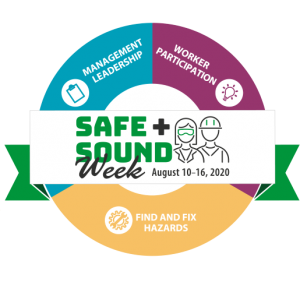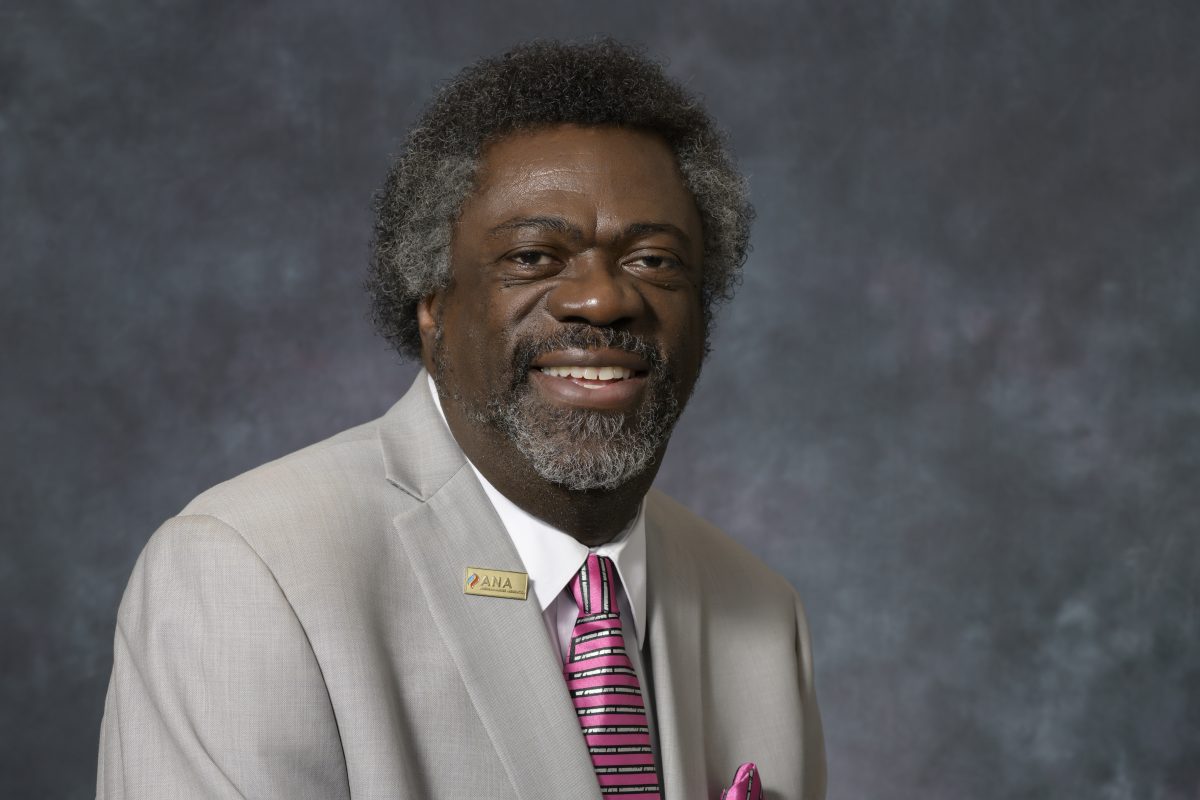
What makes a nurse safe at work? The American Nurses Association (ANA) supports and promotes nurse safety in its many aspects, which include use of personal protective equipment (PPE), preventing workplace violence, avoiding injury in handling patients, and having staff capacity that is appropriate for quality outcomes and nurse safety.
To draw attention to safety in healthcare settings, ANA partners every August with the Occupational Safety and Health Administration (OSHA) during Safe and Sound Week, which is now under way (August 10-16). The national week of activity is meant to recognize the successes of workplace health and safety programs, and share ideas on how to keep America’s workers safe.
This year, the COVID-19 pandemic has shown dramatically that nurse safety needs to be a priority 24/7, 52 weeks a year. The pandemic has tragically taken lives, including nurses’ lives, and challenged all corners of the healthcare system. ANA has been active in public and behind the scenes to advocate for all possible steps to ensure nurses are Safe and Sound at work, so they can continue to care for patients and educate the public about the pandemic. We must safeguard nurses’ and other frontline providers’ well-being and heed their invaluable insights so that the nation can recover faster and stronger.
As ANA President Ernest Grant said recently in impassioned testimony before Congress, “It is both a moral and strategic imperative for our nation’s leaders to do everything possible to arm and protect nurses and other critical responders as we work to combat the pandemic and prepare for future public health crises.”
For Safe and Sound Week in the year of COVID-19, PPE and workplace violence are of special concern to ANA.
Personal Protective Equipment. Access to appropriate PPE has been one of ANA’s main legislative priorities during COVID-19. Below are some talking points we have made to legislators and thought leaders, that you can also share with your elected officials:
- PPE shortages continue to persist throughout the healthcare system. At one point this year, three out of four nurses said they are required to reuse their N95 respirators, or are encouraged to do so.
- Many nurses have reported they do not feel safe using PPE that has been through a decontamination process.
- Decontaminated respirators may not fit properly or may have other deficiencies.
- When nurses voice their concerns about unsafe PPE, they should not be subject to retaliation. At ANA’s urging OSHA encourages workers to report such incidences.
- A solution to addressing safety issues with PPE is to return to OSHA standards and pre-COVID guidelines as soon as possible.
- ANA also supports creation of an OSHA standard specifically addressing risks of infection disease transmission.
For more information about ANA advocacy on PPE, visit the COVID-19 resources on Nursing World and share your voice with congress to let them know that more PPE is needed immediately.
Workplace Violence. Workplace violence by patients, family members, peers, and external individuals, including intimate partners, is a serious safety issue in healthcare settings, affecting nurses and patients. Yet violence and other abuses toward nurses are not well tracked and analyzed. One reason is that many nurses do not report incidents of violence, perhaps in the belief that their experience will not be acted upon effectively. The COVID-19 emergency has revealed unique threats that could arise in future emergency or high-stress periods, posing risks to nurses and to patient care. For instance, there have been times when family frustration about patient isolation has led to threats and violence. Nurses and other healthcare workers have also felt unsafe in their own communities, because of stigma and unfounded fears about exposure to the virus from healthcare workers specifically.
ANA believes workplace violence can and must be addressed. Our #End Nurse Abuse campaign is raising awareness about risks as well as ways to prevent violence and abuse in healthcare settings. ANA supports legislative and regulatory reform, such as OSHA standards for prevention programs, and collecting national data with effective reporting systems.
Safe and Sound Week is a good reminder that nurse safety is the responsibility of policymakers, employers, the nursing profession, and nurses themselves. Here are more ANA resources that can help keep nurses safe at work:
Safe Patient Handling and Mobility. In the HealthyNurse Survey 58 percent of nurses said they have experienced musculoskeletal pain at work in the past year. This pain is typically caused by the repetitive motions of transporting, mobilizing, repositioning, or ambulating patients. Musculoskeletal pain is not new to healthcare workers, and for the past 20 years ANA has advocated for safer practices and eliminating injuries for all professionals across the care continuum. For critically ill COVID-19 patients, proning procedures have been used to reposition patients, adding patient-handling risks for nurses.
In 2013, ANA developed the Safe Patient Handling and Mobility (SPHM) Interprofessional National Standards to assist organizations in creating SPHM policies and implementing and sustaining SPHM programs. Creating a culture of safety is the foundation for the standards. Without a commitment from staff and leadership, as well as the necessary financial resources, a successful SPHM policy cannot happen, and an SPHM program cannot be maintained. Other aspects of patient care are also addressed by safely handling patients including falls, pressure ulcers, skin injuries, and aggression among patients.
Mental Health. Some nurses have become sick with COVID-19, but many others will suffer from anxiety, fear, anger, loss, isolation, loneliness, depression, stress, grief, or bereavement because of the pandemic. This is especially true for those who had pre-existing mental health conditions, or those serving on the front line. For all of us, mental health screenings, learning to build resilience, and getting the mental help needed immediately are key. Please see this blog and these webpages on nurse mental health and combating stress for further resources.
Self-Care. An empty plate has nothing to offer. If nurses are not rested, safe, well-nourished, fit, and satisfied with their work-life balance, then they may suffer personally and not be able to give the best care to their patients and families. That’s why self-care is so important. As difficult as this might be in the era of COVID-19 work and meal breaks, at least 7 hours of sleep daily, physical exercise, healthy food, and restorative “down time” need to be non-negotiable items in nurses’ routines. Healthy Nurses Healthy Nation has a plethora of blogs on self-care and stories of inspirational nurses.
Now more than ever, nurses, alongside other health professionals and their employers, need to focus on wellness and occupational health and safety. Nurses cannot do it alone; safe, respectful, and just workplace cultures are everyone’s responsibility. To learn more about occupational health and safety for nurses and health professionals, including immunizations, COVID-19, (see also CDC COVID-19 HCP guidance) staffing and more, visit www.nursingworld.org. For additional resources on self-care and nurse wellness, visit www.hnhn.org.

